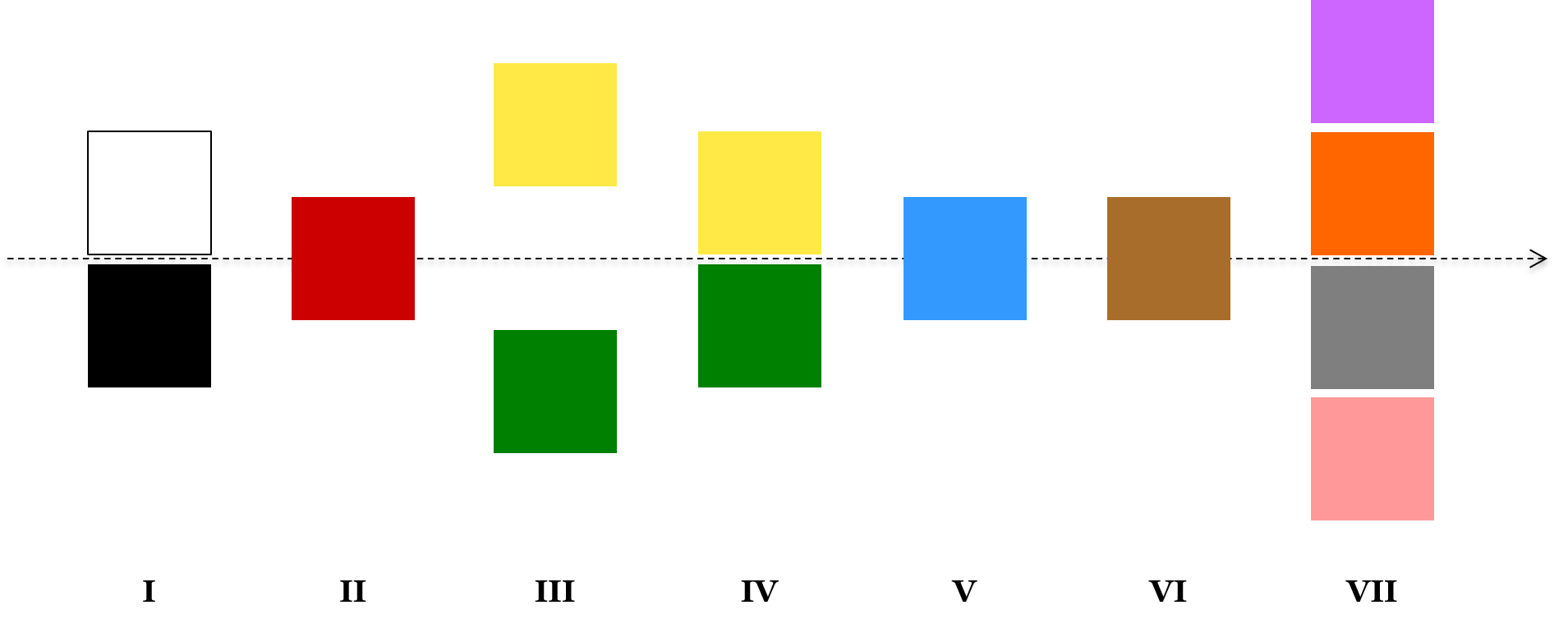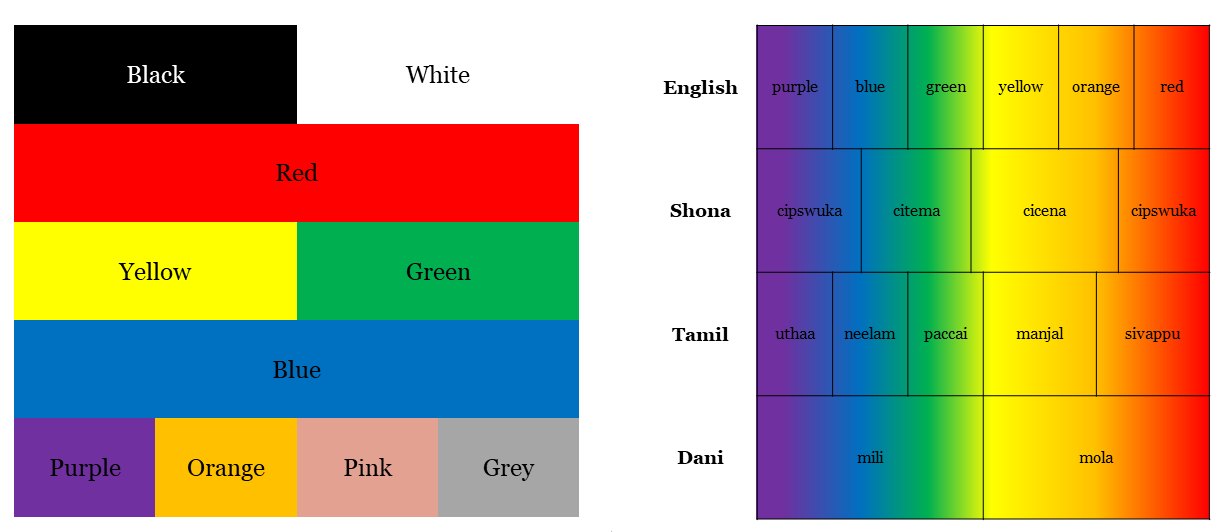4.5 Language and Thought
Dinesh Ramoo
George Orwell’s novel 1984 presents a dystopian world where an authoritarian regime imposes absolute control over all aspects of human life. The rulers of the state use Newspeak as a language modification system to modify people’s thought. The idea is that if people don’t have a word for a concept such as freedom, then they can’t think it. This idea of thought being directly influenced by language is an extension of the Sapir-Whorf hypothesis.
The central idea of the Sapir-Whorf hypothesis is that the characteristics of a language influences the thought forms of that language community. Indeed, it goes even further and states that the way people view and understand the world is influenced by their language. Originally proposed by Edward Sapir, a linguist, and supported by an amateur linguist Benjamin Lee Whorf (Whorf, 1956a, 1956b). Whorf studied the Indigenous languages in America to collect evidence this hypothesis which extends into two ideas: linguistic determinism and linguistic relativism.
Linguist determinism states that the form and characteristics of a language determine the way we cogitate, remember and understand the world. Linguistic relativism is the idea that different cognitive structures emerge from the way languages map words onto things in the real world. Some have differentiated these ideas into three versions:
- The strong version: language determines thought
- The weak version: language affects how we perceive the world
- The weakest version: language affects differences in processing in certain tasks where language is a factor.
Whorf analysed Indigenous languages such as Hopi, Apache, and Aztec to differentiate what he termed their ‘world view.’ He found that Hopi have no words that refer to time and therefore they must have a different concept of time compared to Europeans. These observations are now considered suspect (Malotki, 1983). Whorf used rather idiosyncratic translation methods that failed to capture the complexity of Indigenous languages. A more direct evidence is in the form of vocabulary.
It was observed that some cultures have only a few words for particular concepts compared to others. A famous example is that the Inuit have four different words for snow (Boas, 1911). The idea being that as the Inuit spend more time in the snow, they would develop more nuanced ways of differentiating this element and have a different perception of it. In fact, later observations only turned up two root words for snow in Inuktut: ganik for ‘snow in the air,’ and aput for ‘snow on the ground.’ Indeed, English has at least four words for snow: snow, slush, sleet, and blizzard. Does this mean English speakers are now more advanced in snow-classification compared to the Inuit? In fact, differences in vocabulary only indicate familiarity with a concept and not differences in perception. Another example that is often brought into bear in this discussion is that of colour hierarchy.
Languages differ in terms of how many basic colour terms they possess. By colour terms, I don’t mean magenta and mauve, but words like red, green, and blue. Berlin and Kay (1969) explored the basic colour terms in various languages. Basic is defined by words made up on one morpheme (such as blue rather than marine blue) and not being contained within another colour (blue rather than azure). These are also terms that are generally known. What cross-linguistic exploration of these basic colour terms has shown is that there is an actual progression in languages acquiring basic colour terms.

As seen in Figure 4.5, all languages have two basic colour terms: black and white. Some languages only have these two terms. If a language has three colour terms, then it will have terms for black, white and red. If a language has four basic colour terms, then it will have these three and either yellow or green. If a language has five colour terms, then it will have all five and so forth along the hierarchy. English has names for eleven basic colour terms. Does this mean that people see colours differently based on what terms they have in their language? Not very likely. For one thing, languages expand their colour vocabulary all the time. For example, Telugu expanded the term for yellow/green: పచ్చ /pət͡ʃt͡ʃə/ into two terms: yellow పసుప్పచ్చ /pəs̪uppət͡ʃt͡ʃə/ and green ఆకుపచ్చ /ɑːkupət͡ʃt͡ʃə/. English has had recent additions such as orange. Before this term came into English, English speakers used the term red for things that were orange such as red deer, red robin, and red fox. However, once the fruit was introduced into Europe, the colour of the fruit became associated with the colour. As seen in Figure 4.6, the colours form not a set of discreet units but a spectrum. We can cut up this spectrum into individual units and sometimes divide them further as the need arises. So, English-speakers used red to cover a larger area of the spectrum until they came across the term orange to divide it further. Telugu speakers used one term to refer to a unit spanning what we consider yellow and green.

What is interesting about the colour hierarchy is that participants in memory tasks often have difficulty with colours for which they don’t have differentiating terms. Brown and Lenneberg (1954) as well as Lantz and Stefflre (1964) used colour chips of different hues, brightness and saturation to test people’s memory for them. They found that participants were able to remember the chips more easily if they had the basic colour terms for them in their language. This appeared to support the Sapir-Whorf hypothesis.
Heider (1972) explored this further by working with the Dani. They only have two basic colour terms for dark and light colours (see Figure 4.6). However, when Heider taught them come made-up colour terms they learned the names for basic colour terms more easily than for other colours. They also remembered basic colours more easily than non-basic ones even though they have no names for them. As we saw earlier, the division of the colour spectrum is not arbitrary. It is done by dividing the spectrum along physiological lines. These observations suggest that while there are some biological and linguistic constraints in remembering colours, this is not the strongest evidence for the Sapir-Whorf hypothesis. Colour perception is not influenced by linguistic constraints on colour terms.
Media Attributions
- Figure 4.5 Visualizing the Colour Hierarchy by Dinesh Ramoo, the author, is licensed under a CC BY 4.0 licence.
- Figure 4.6 The Colour Hierarchy as a Spectrum by Dinesh Ramoo, the author, is licensed under a CC BY 4.0 licence.

